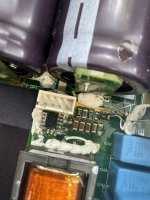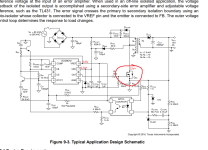Been working on a project and unfortunatly last night, all my faulty here, ran into a big snag. On my 4850g2 unit, I have ESP32 inside of it to act like a wireless controlled system that worked amazing for about a week or so. The ESP32 was powered using 12v from fan header (my board has buck of course), and like I said everything ran perfect for a week. Last night, I bricked the firmware on esp and had to pull it all apart. Flashed it, assmebled and went to plug it in but a big single spark flew out and that was it. No tripped breaker or anything and no smell. Inspected the entire unit and could not find Anything that looked burnt or blew. What I discovered is that the 12v source wire (coming form 12v pin on the fan header) got jammed between lid and the body and shorted! Very much my careless fault here, was late nigth after work and exhausted.
So now, I hear the unit emit the usual/normal electrical "noise" when 240v is applied. But output nor the fan turns on as entire logic side is down. No lights on the logic board and no 12v to the fan. Seems like maybe a resistor or something between the AC source to the Logic has been damaged, but no idea on how to find it. Somone in first few posts on here had similar issue due to CAN isolation issue and 12v, however their MOSFETs on the side of the unit blew and such. My unit has zero damage that I can find, so I wonder if may someone could help. Ordered a new 4875 unit from china but it wont be here for weeks and batteries are alreadly low and would love to not leave them depleted for long time.
Thanks in advance!
So now, I hear the unit emit the usual/normal electrical "noise" when 240v is applied. But output nor the fan turns on as entire logic side is down. No lights on the logic board and no 12v to the fan. Seems like maybe a resistor or something between the AC source to the Logic has been damaged, but no idea on how to find it. Somone in first few posts on here had similar issue due to CAN isolation issue and 12v, however their MOSFETs on the side of the unit blew and such. My unit has zero damage that I can find, so I wonder if may someone could help. Ordered a new 4875 unit from china but it wont be here for weeks and batteries are alreadly low and would love to not leave them depleted for long time.
Thanks in advance!



